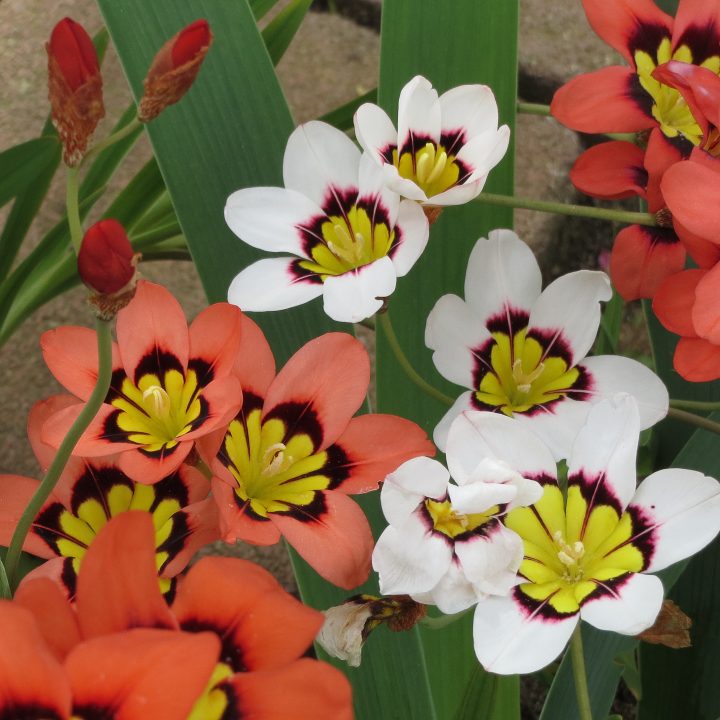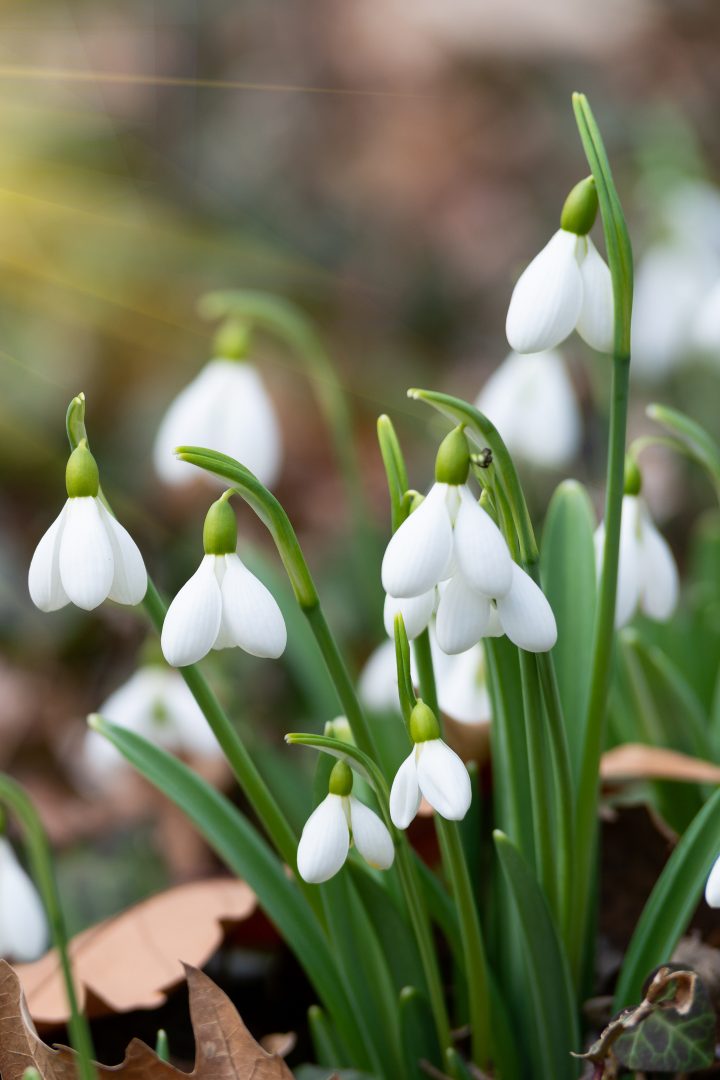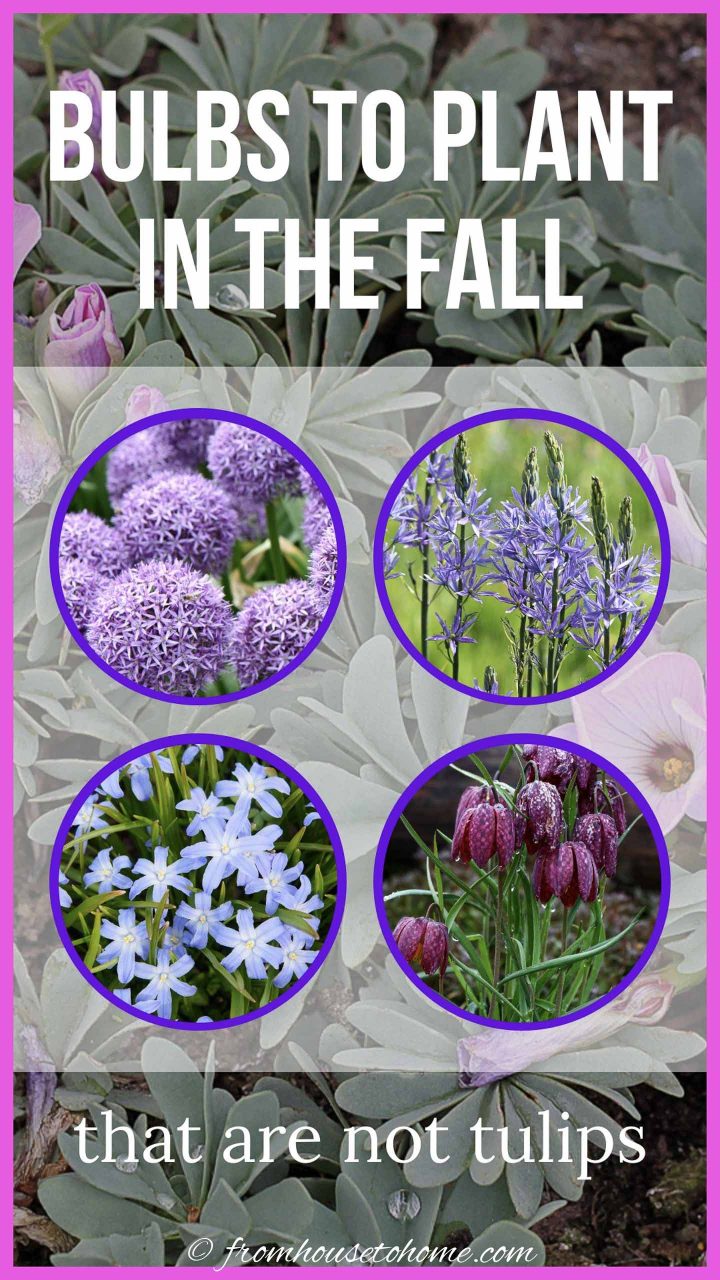Best Bulbs To Plant In The Fall (That Are Not Tulips)
With beautiful flowers, reliable growth and low maintenance plants, these are the best bulbs to plant in the fall. And no…tulips are not on the list.
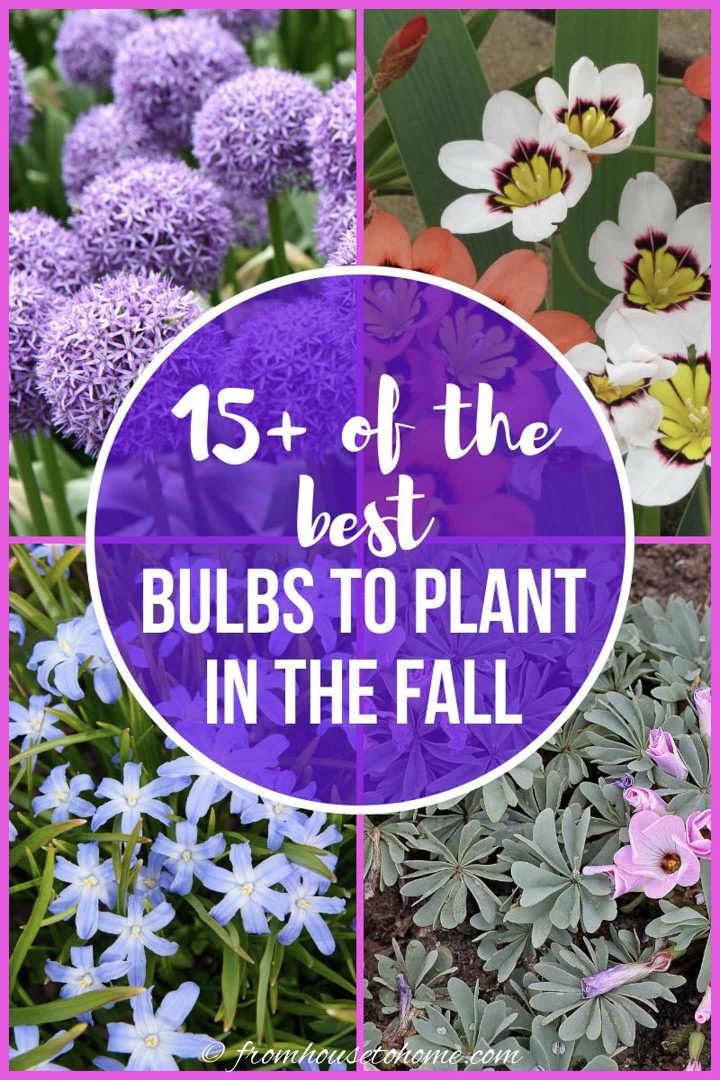
Bulbs are one of my favorite types of plants.
Most of them are easy to grow, have beautiful flowers and come back reliably every year.
The one exception?
Tulips!
Some of them look great the first year and then never come back.
Or there's just one or two straggly-looking flowers.
Or some weird color tulip comes up that I know I didn't plant!
So I have pretty much given up planting tulip bulbs.
But there are so many other pretty bulbs to plant in the fall that I really don't miss the tulips at all.
So here's my list…
1 | Alliums
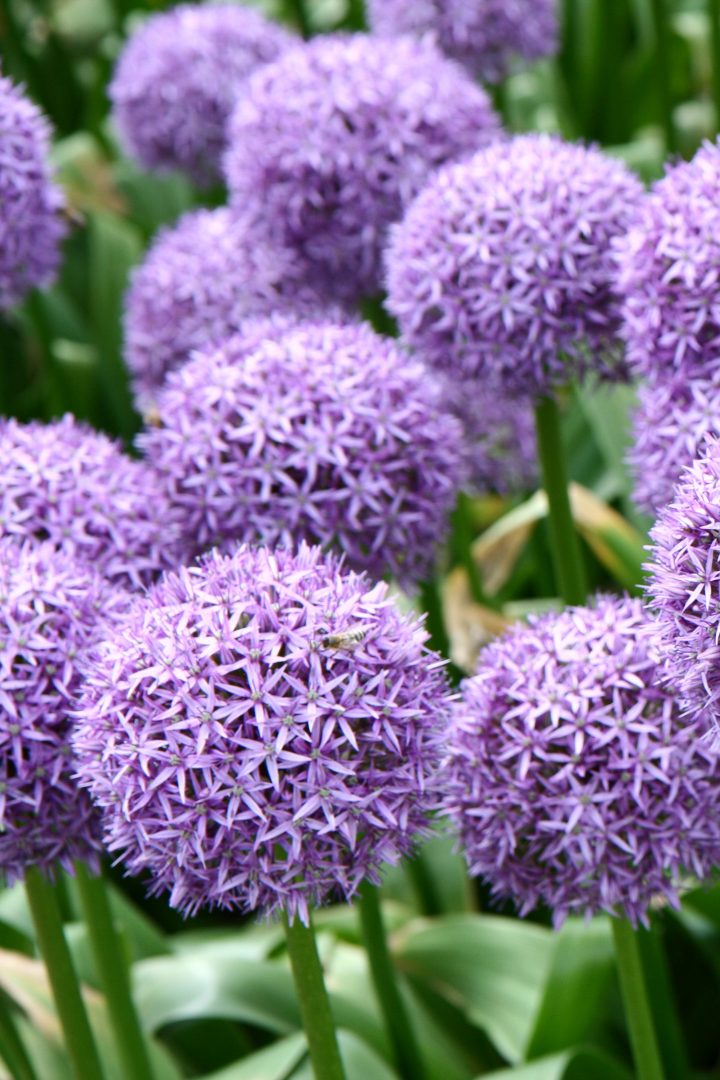
Zones: 4 to 10
Light: Sun
Height: 14" to 32" (depending on variety)
Spread: 6" to 18"
Bloom Time: Late Spring / Early Summer
Flower Color: Blue, purple, white pink
Alliums bloom in late spring or early summer with ball-shaped, fragrant flowers in blue, purple, white or pink.
They are resistant to deer, rabbits and squirrels, attract butterflies and make great cut flowers for a spring bouquet.
Like many spring-blooming bulbs, the foliage is not very attractive so it helps to plant with other perennials that will cover their leaves. (Find our list of companion plants for spring-flower bulbs HERE).
Plant the bulbs in the fall, 5" to 6" deep and 6" to 12" apart (depending on the variety).
2 | Autumn Or Saffron Crocus
Zones: 5 to 9
Light: Full Sun / Part Shade
Bloom Time: Fall
Height: 4" to 6"
Spread: 3"
Just like the spring crocus, the autumn or Saffron crocus is a bulb that produces 6" high flowers and returns every year.
Plant them in late summer to have blooms the same year in the fall.
As an added bonus, the Saffron Crocus is actually the source of the Saffron spice.
Although I haven't tried, they say you can harvest your own Saffron by picking the red stamens from the flower when it is fully opened. (I always think they look to pretty to pick 🙂 ).
Plant them 3" to 5" deep and 6" apart.
3 | Crocus

Zones: 3 to 9
Light: Sun / Part Shade
Height: 4" to 6"
Spread: 2" to 3"
Bloom Time: Early Spring
Flower Color: White, purple, yellow, blue
Crocus is one of the best known bulbs for late winter or early spring flowers.
The blooms are fragrant, available in many different colors, and can often be seen blooming through the snow.
They are easy to grow, come back reliably every year and will naturalize into a large clump of flowers.
Spring crocuses go dormant in the summer so plan on growing them with companion plants that will cover any bare spots.
Plant 3" deep and 3" to 4" apart.
4 | Daffodils (Narcissus)
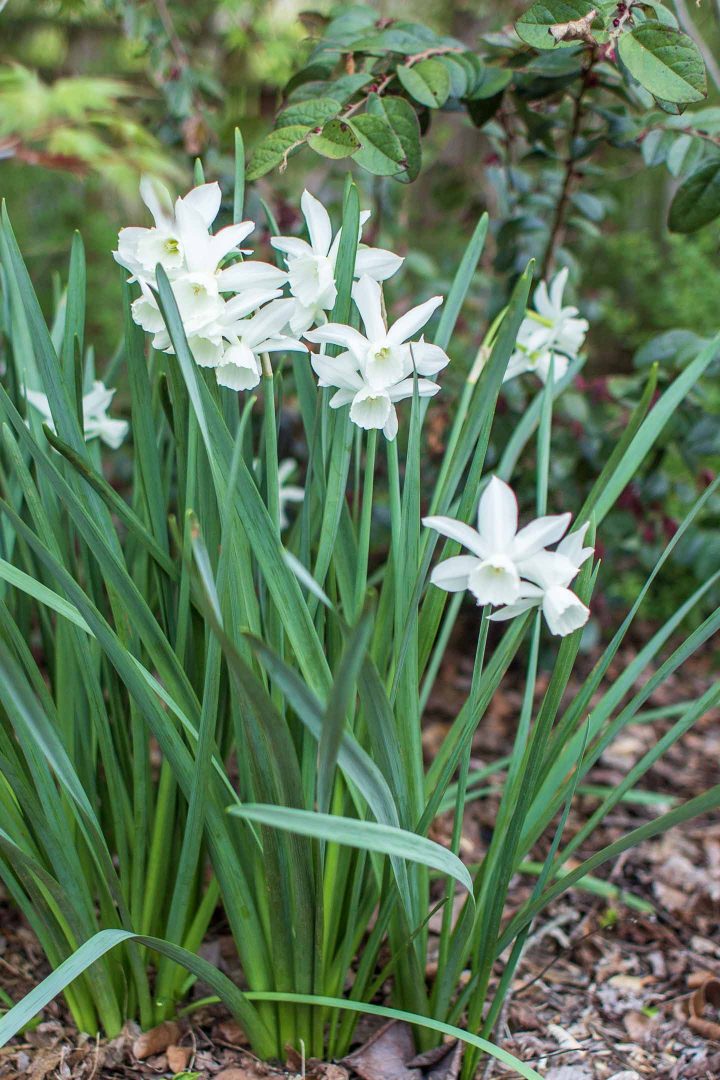
Zones: 3 to 9
Light: Sun to Part Shade
Bloom Time: Spring
Height: 18" to 24"
Spread: 12"
Daffodils are one of the lowest maintenance plants you can grow.
They will survive in pretty much any soil as long as it isn't too wet (which will cause the bulb to rot).
Plant the bulbs in the fall to get gorgeous spring flowers. Click HERE for more information on planting bulbs.
Then they will come back and bloom reliably for many years (unlike many other spring bulbs. Yes, tulips...I'm talking to you).
Most varieties will naturalize as well, so you'll get more of them over time...but not in a bad way.
Since daffodils will go dormant in the summer, it's a good idea to plant some companion plants to fill in the space. Get some ideas for bulb companion plants HERE.
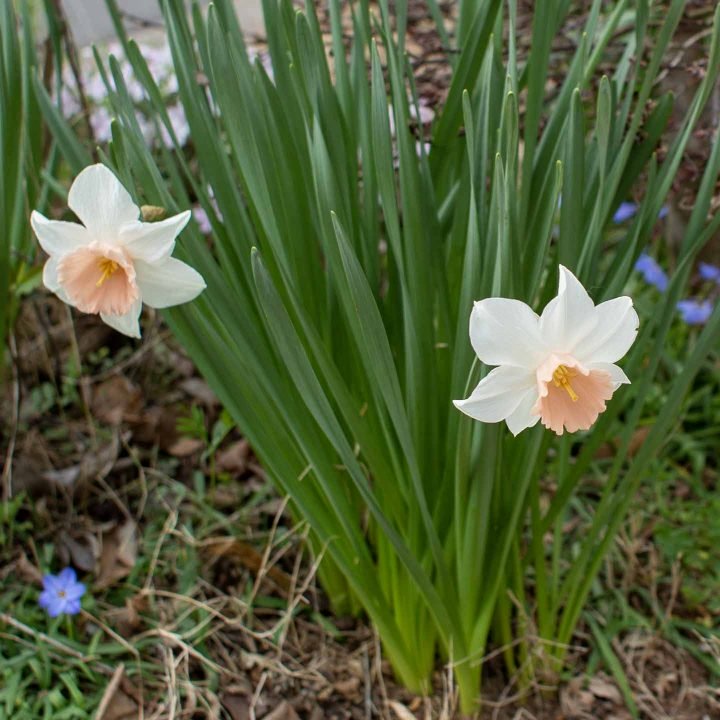
If you're not a big fan of yellow, look for white or pink varieties (like the picture above). They're really more coral than true pink but still a pretty color.
Plant the bulbs 6" deep and 4" to 6" apart.
5 | Glory of the Snow (Chinodoxa)

Zones: 2 to 8
Light: Full Sun / Part Shade / Shade
Height: 6" to 8"
Spread: 2" to 3"
Bloom Time: Early Spring
Flower Color: Blue, pink, white
As the name suggests, Glory of the Snow is another one of the spring-flowering bulbs that blooms in late winter or very early in the spring and often comes up through the snow.
It sports pink, blue or white blooms that are deer-resistant and can naturalize into a carpet of flowers.
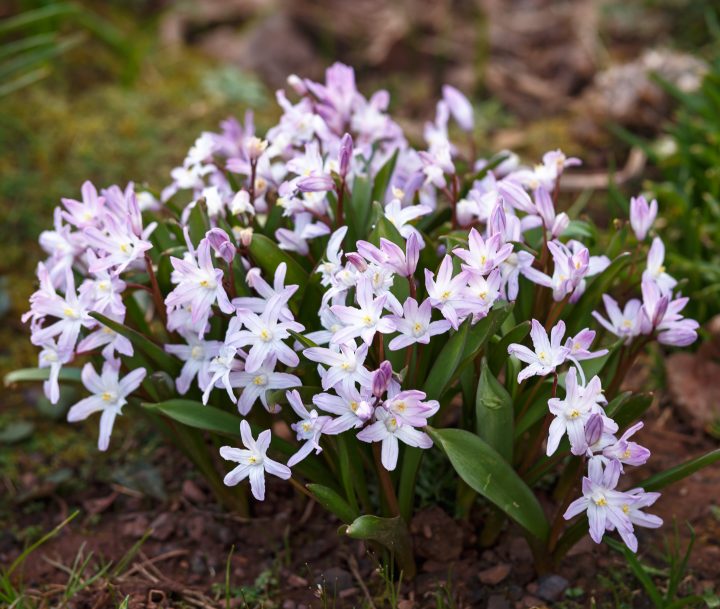
Plant Chionodoxa bulbs 3" deep and 2" to 3" apart.
These plants are poisonous so be careful where you plant them if you have pets or kids that may try to eat them.
6 | Guinea Hen Flower (Fritillaria meleagris)
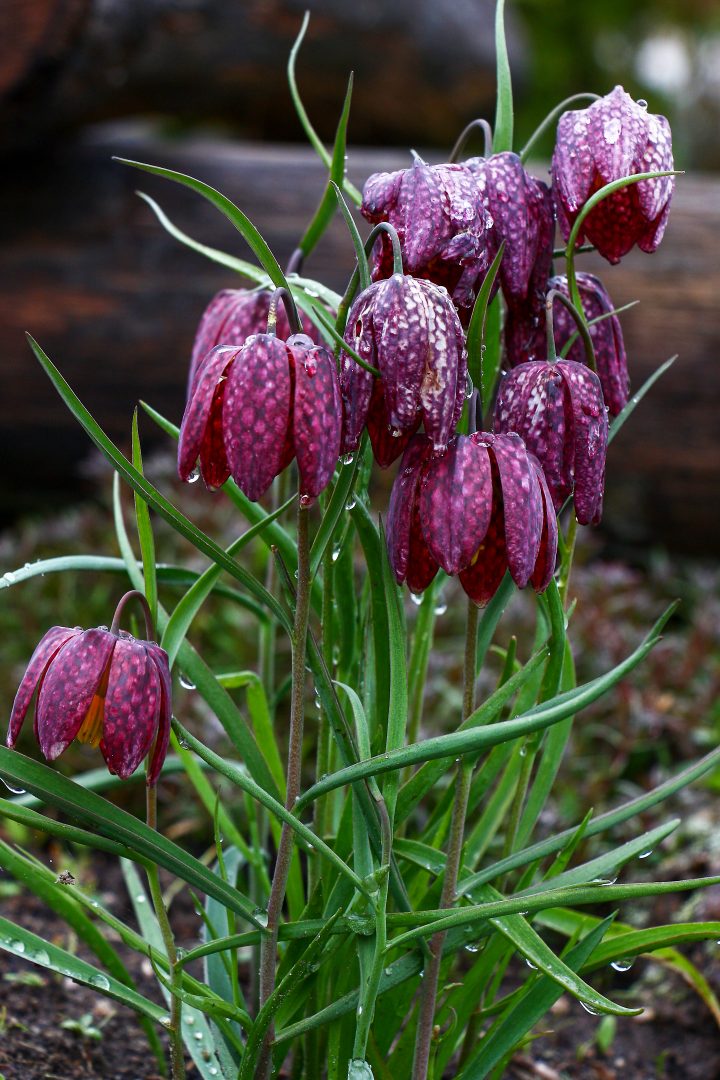
Zones: 4 to 8
Light: Full Sun / Part Shade
Height: 10" to 15"
Spread: 3" to 4"
Bloom Time: Mid-spring
Flower Color: Purple, white
The Guinea Hen Flower (Fritillaria meleagris) has purple or white flowers with a unique checked pattern.
It blooms in mid-spring and is deer- and rodent-resistant.
Planted in the garden, it naturalizes. But it also does well in containers.
Plant the bulbs 5" deep and 3" to 4" apart.
7 | Harlequin Flower (Sparaxis)

Zones: 8 to 10, can be grown as an annual in zones 2 to 7
Light: Full Sun
Height: 12" to 24"
Spread: 8"
Bloom Time: Early to mid summer
Flower Color: Peach, pink, white red, orange
The Harlequin Flower (Sparaxis) blooms in early to mid summer with cheerful flowers in peach, pink, white or red and contrasting star-shaped centers.
They are perennial in zones 8 to 10 but can be planted in the spring and lifted in the fall in zones 3 to 7.
Sparaxis also grows well in containers. So you can bring the planters in to over-winter the bulbs.
Plant them 2" to 3" deep and 3" to 4" apart.
8 | Hyacinth
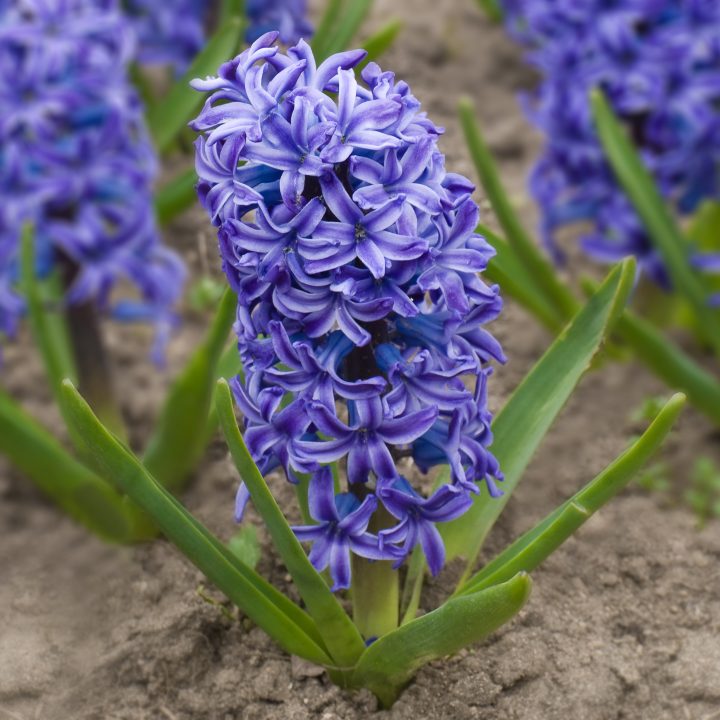
Zones: 4 to 9
Light: Full Sun / Part Shade
Bloom Time: Spring
Height: 6" to 12"
Spread: 3" to 4"
Hyacinths are a bulb that is planted in the fall, blooms in the spring and comes in almost every color except for orange.
They have very fragrant flowers and look great planted in masses in the garden.
Like most spring-blooming bulbs, the leaves will die back after the plant has finished blooming so you will want to plant something else in the same location to cover the bare spot.
9 | Reticulated Iris (Iris reticulata)

Zones: 4 to 9
Light: Sun / Part Shade
Bloom Time: Early Spring
Height: 4"
Spread: 4"
Iris reticulata are bulbs with early spring flowers that only reach about 4" in height (not to be confused with the tall flag-type irises that bloom later in the spring or early summer).
These Irises are available in a variety of colors but I love the bright blue ones.
I grow them through my Candy Stripes phlox and the colors look great together.
Unfortunately, these iris blooms don't last very long, but they are so bright and beautiful that I still love them.
Plant the bulbs in the fall, 3" to 4" deep and space them 3" to 4" apart.
10 | Silver Shamrock (Oxalis adenophylla)

Zones: 4 to 9
Light: Full Sun / Part Shade
Height: 3" to 6"
Spread: 4" to 6"
Bloom Time: Mid to Late Spring
Flower Color: Pink
With its silver-green clover-shaped leaves and pink flowers, Silver Shamrock (Oxalis adenophylla) makes a statement in the spring garden.
It's a low-growing plant that is deer resistant, grows well in containers and (unlike many other varieties of Oxalis) is not invasive.
Plant the bulbs 3" deep and 4" to 5" apart.
11 | Snowdrops (Galanthus)

Zones: 3 to 9
Light: Shade / Part Shade
Height: 6" to 8" tall
Spread: 2"
Bloom Time: Early Spring
Flower Color: White
Snowdrops are an heirloom bulb that grows wild in Europe.
As their name suggests, they have white flowers that bloom in late winter or very early in the spring, often while snow is still on the ground.
They are deer-resistant, rabbit-resistant and the squirrels don't like them.
Snowdrops will naturalize and create a pretty ground cover in the spring. But they go dormant in the summer so plant them with other shade ground covers (like Hostas and Ferns) to cover the empty space.
Plant the bulbs 5" deep and 2" to 3" apart.
12 | Spider Lily (Lycoris)

Zones: 5 to 10
Light: Full Sun / Part Shade
Height: 12" to 24"
Spread: 6" to 8"
Bloom Time: Late summer
Flower Color: Red, yellow, white, pink
Spider Lilies are fragrant, deer resistant, drought tolerant bulbs that have red, yellow, white or pink flowers.
The beautiful blooms pop out of the ground in late summer with no foliage and last for about 2 weeks.
Once the plants have finished flowering, the leaves appear in late fall and stay in the garden until late spring when they die back.
Plant the bulbs 5" deep and 8" apart in their forever home. Spider Lilies don't like to be transplanted.
They will multiply over time and should be dug up and divided every few years.
13 | Spring Anemone (Anemone blanda)
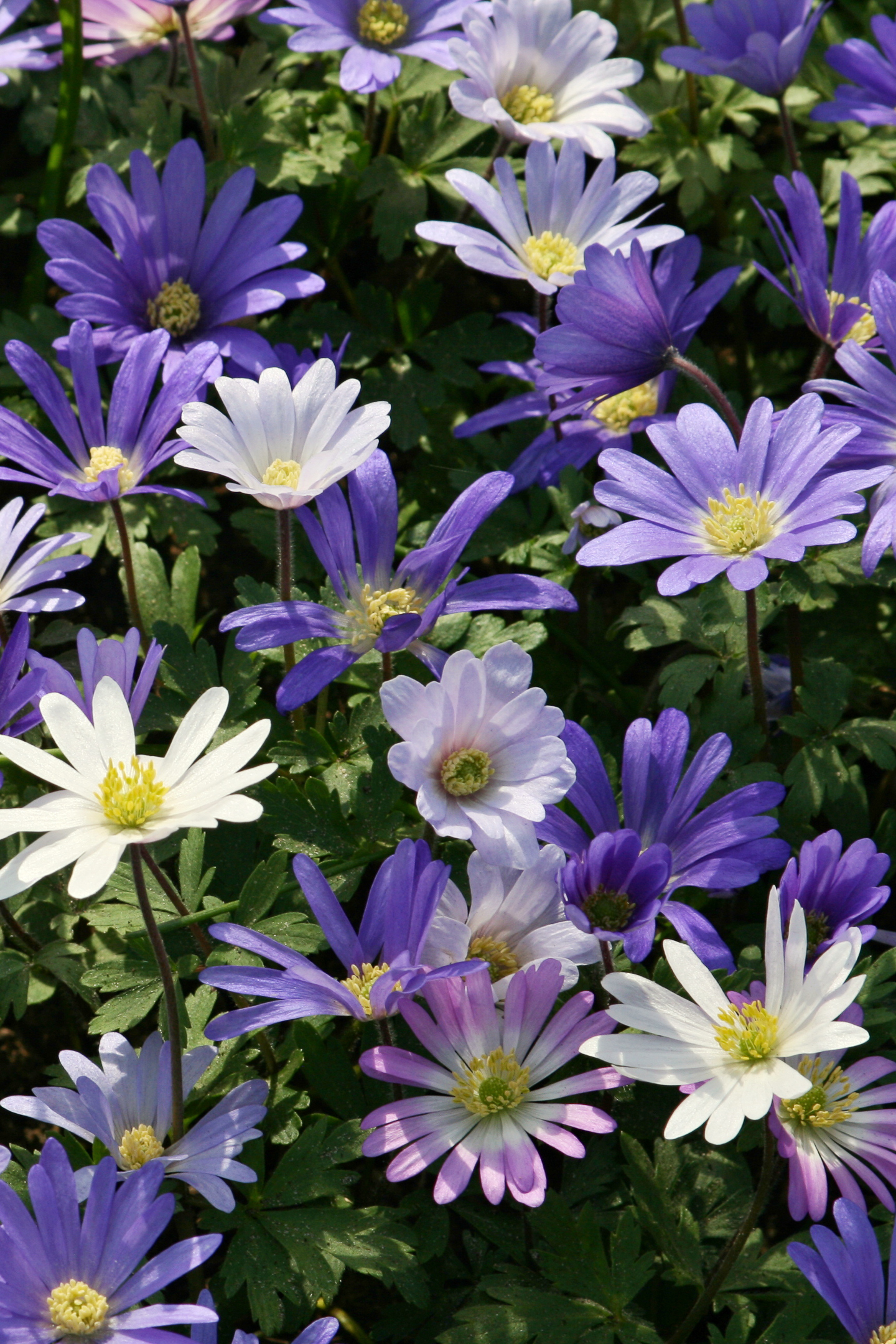
Zones: 4 to 8
Light: Full Sun / Part Shade
Height: 4" to 6"
Spread: 2" to 3"
Bloom Time: Early to late spring
Flower Color: White, blue, purple, pink
Spring Anemone (Anemone blanda) is a low-growing plant with daisy-like flowers in white, blue, pink or purple that bloom in the spring.
They are deer resistant, rabbit resistant, and make great cut flowers.
Soak the bulbs for 2 hours in luke warm water before planting 3" deep, about 3" apart.
Be aware that Anemones are poisonous so plant accordingly.
14 | Starflower (Ipheion uniflorum)
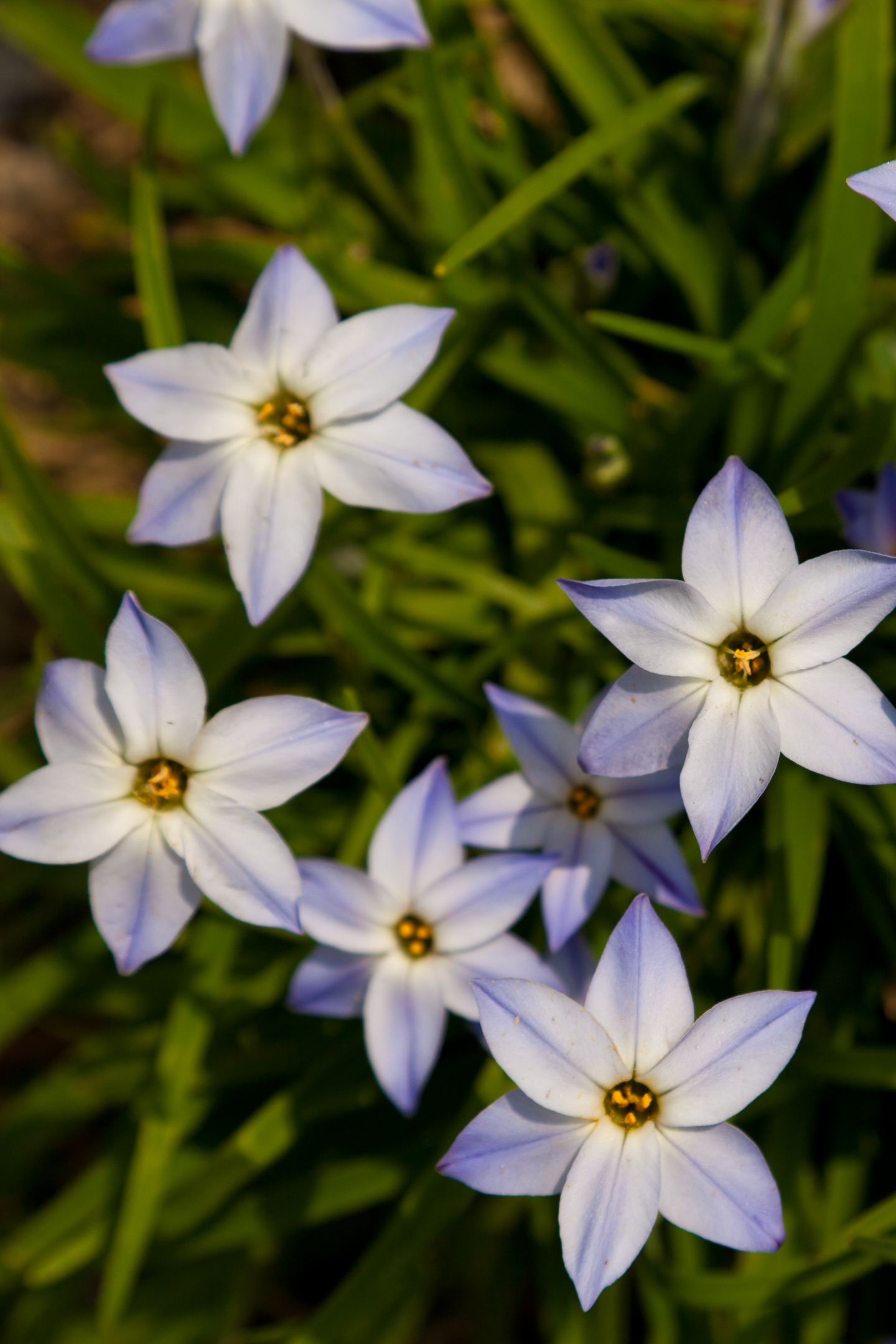
Zones: 5 to 9
Light: Full Sun / Part Shade
Height: 4" to 6"
Spread: 2"
Bloom Time: Spring
Flower Color: Purple, blue, white, yellow
Starflowers are spring-blooming bulbs that have purple, white or yellow star-shaped flowers and narrow grass-like leaves.
They grow 4" to 6" tall, are deer-resistant and grow well under trees.

Starflowers naturalize easily and look beautiful with mid-spring daffodils and tulips.
Plant the bulbs 3" deep and 2" to 3" apart.
15 | Wild Hyacinth (Camassia)

Zones: 3 to 8
Light: Full Sun / Part Shade
Height: 15" to 32"
Spread: 4" to 6"
Bloom Time: Spring
Flower Color: Blue, purple, white, cream
Wild Hyacinth is a native bulb with blue, purple, white or cream flowers in late spring.
It likes moist, acidic soil and can survive in wet soil better than most bulbs.
Camassia is deer-resistant, squirrel-resistant and will naturalize to form a large clump.
It also grows quite well in containers.
Plant them 5" deep and 4" to 6" apart.
Note that these plants are poisonous.
Hopefully you've found some new bulbs to add to your fall planting list!
Other Plant Ideas You Might Like
- Bulb Companion Plants For Shade
- Tips For Planting Bulbs
- Blue and Purple Companion Plants For Spring Blooming Bulbs
Do you have other suggestions for bulbs to plant in the fall? Tell us in the section below.
Pin It So You Don't Forget It!
This post was originally published on September 8, 2020 but was updated with new content on November 23, 2024.




